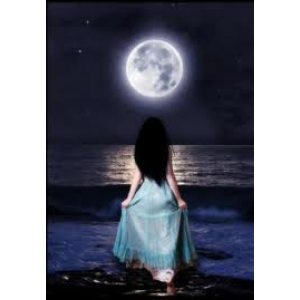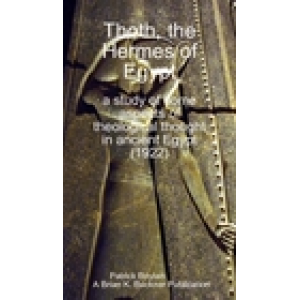
Many names associated with the Full Moon are derived from the early
Native American tribes of the United States. Back in the time when many lived free off the land, they kept track of the seasons by allocating meaningful names to each of the monthly Full Moons. The names they chose were often closely associated with daily life and nature. Later variations in their names occurred when European settlers arrived and stole their lands, adding different names to suit their own circumstances.
January - Wolf Moon
Amid the cold and deep snows of midwinter, quite often wolf packs would roam and howl hungrily outside Indian villages, and so the full moon in January became known as the Wolf Moon. Later other names associated with January were added, such like: the Old Moon, the Winter Moon, the Ice Moon, the Cold Moon and the Moon After Yule.
February - Snow Moon
Since the heaviest snows fell during this month, native tribes of the north called the February full moon the Snow Moon. Other tribes referred to it as the Hunger Moon, since the harsh weather conditions in their areas made hunting very difficult. Other names associated with the February full moon include: the Trapper's Moon, the Opening Buds Moon and the Quickening Moon.
March - Worm Moon
The Full Moon in March lends itself to a variety of names. As temperatures begin to warm and the ground began to thaw, earthworms appeared bringing the return of the Robin. The more northerly tribes called it the Crow Moon after the cawing of crows signalled the end of winter, they
Also Called it the Crust Moon after the snow became crusted from thawing by day and freezing at night. The Full Sap Moon and Maple Sugar Moon marks the time when Maple trees were tapped to provide sugar. To the European settlers it was known as the Lenten Moon. While it was considered to be the last full moon of winter, weather could still be temperamental and so to some it was known as the Storm Moon. Chaste Moon???
April - Pink Moon
The Pink Moon was named after “moss pink” (Phlox subulata), a native flower to North America and one of the earliest widespread flowers of the spring. Other names for the April full moon are the Sprouting Grass Moon, the Wind Moon and the Frog Moon. Among coastal tribes it was also known as the Fish Moon, because this was the time that the Shad fish swam upstream to spawn.
May - Flower Moon
In most areas by the time May arrives flowers are abundant everywhere, so its not surprising that the full moon should take this name. Other names for the May full moon include: the Budding Moon, the Corn Planting Moon, the Milk Moon and the Egg Moon.
June - Strawberry Moon
The Strawberry Moon name was use by most of the native Algonquin tribes of North America, and known because the strawberry had a relatively short harvesting season that began in the month of June. Other names for the full moon in June are: the Rose Moon and the Strong Moon. Dyad Moon???
July - Buck Moon
July was the month when the new antlers of buck deer begin to show as they grew out from their foreheads in coatings of velvety fur. It was also known as the Thunder Moon due to the frequency of thunderstorms that appear at this time, due to which it was also called the Blessing Moon. Another name associated with the July full moon is the Hay Moon. Mead Moon???
August - Sturgeon Moon
The fishing tribes of the Algonquin before their decimation by the Iroquois and the League of Five Nations are given credit for the naming the Sturgeon Moon. Sturgeon, a large fish of the Great Lakes and other major bodies of water are particularly abundant and most readily caught during this month. To other tribes it was known as the Red Moon because as it rises, it appears reddish through the sultry heat haze. In both Europe and America it was also called: the Corn Moon, the Grain Moon and the Fruit Moon.
September - Harvest Moon
This is the full Moon that occurs closest to the autumn equinox. In two years out of three, the Harvest Moon appears in September, but in some years even as late as October. At the peak of harvest time, farmers often work late into the night aided by the light of the Harvest Moon (see below for more).
October - Hunter’s Moon
As summer leads into autumn and the leaves begin to fall, once the harvest is in attention is turned to the animals and the hunt is on. By this time the deer have fattened and since the fields have been cleared, the hunters can easily see the game as animals come out to glean. As well as the being known as the Hunter’s Moon, other names for the full moon in October are: the Falling Leaves Moon and the Blood Moon.
November - Beaver Moon
In November to ensure a good supply of warm winter furs, beaver traps are set before the waters of the swamps freeze over, at which time beavers are plentiful and actively about as they prepare for their own winter in hibernation. Other names for the full moon in November are: the Frosty Moon and the Mourning Moon.
December - Cold Moon
It’s easy to see how the full moon in December gets it name the Cold Moon, as during this month the winter cold deepens its grip. Likewise the nights are at they’re longest and darkest during this month, so too the full moon became known as the Long Nights Moon. Naturally enough being in December, it is also called the Moon before Yule.
New Moon/Dark Moon.
The Dark Moon occurs between the last day of the waning moon and the beginning of the waxing moon, vis-a-vis for the New Moon. Each New and Dark moon has the power of in-between, a time that is not a time, similar to midday and midnight etc. When working with New and Dark Moon magick, you should start the active part of the rite a good 45 minutes before either moon reaches its peak, as their energies can be erratic. Also the waning moon allows you to calm down and tune out.
Blue Moon
The Blue Moon is always the 2nd full moon in the same month, and occurs on average once every two and a half years. Because this happens fairly infrequently, it has resulted in the
Expression "once in a blue moon. Historically the Blue Moon was considered unlucky and a real nuisance, for when it occurs it upsets the normal scheduling of festivals. In love songs the Blue Moon is often associated with sadness and loneliness.
Free eBooks (Can Be Downloaded):
Stephen William Hawking - Space And Time WarpsSri Swami Sivananda - On Darwin Evolution And The Perfect ManValentina Izmirlieva - All The Names Of The LordSummer Woodsong - False Memory Syndrome And The InquisitionRabbi Michael Laitman - Kabbalah Science And The Meaning Of Life












